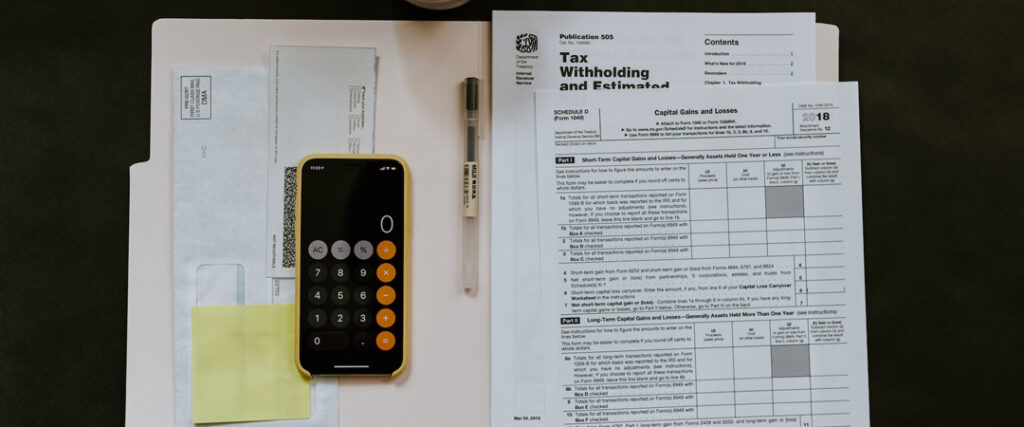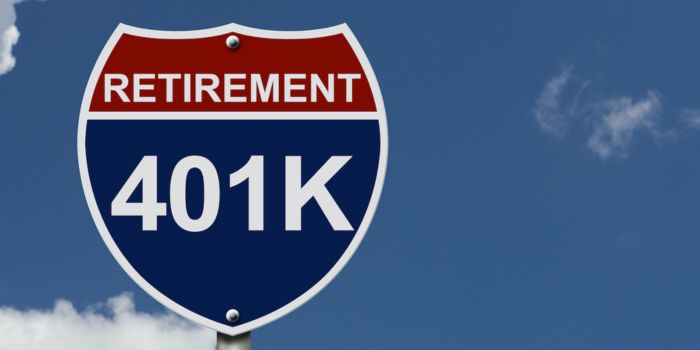Imagine this: You’re 40 years old and ready for retiring at 40, leaving behind the daily grind to enjoy a life of leisure and financial independence. Sounds too good to be true? The reality is that with proper retirement planning and dedication, it is an attainable goal.
The Institute of Financial Wellness is here to guide you through the journey of achieving early retirement by explaining the importance of setting goals, saving aggressively, investing wisely, and maximizing opportunities. Are you ready to take control of your financial future and retire at 40? Let’s dive in!
Quick Summary
- Set early retirement goals, save aggressively and invest wisely to retire at 40.
- Manage debt, evaluate accounts, and understand average 401(k) balance by age for a secure financial future.
- Maximize savings opportunities with employer match programs and utilize Roth/Traditional IRAs for unique tax advantages!
The Path to Retiring at 40

Retiring at 40 may seem like a distant dream, but with the right approach, it’s possible to make it a reality. The key lies in three main pillars: setting early retirement goals, saving aggressively, and investing wisely.
A well-rounded retirement plan requires a clear understanding of your financial needs and a solid strategy to achieve them, even before reaching the traditional retirement age. A savings goal calculator can also help, as well as having a financial coach by your side.
So, how can you get started on the path to early retirement? Let’s explore these three essential steps. Setting early retirement goals involves understanding your financial needs and setting a timeline for when you want to retire.
Setting Early Retirement Goals
In order to retire at 40, it’s crucial to define realistic and achievable retirement goals. One useful guideline is to aim for 70% to 80% of your pre-retirement income as your target retirement savings. This will help you maintain your current lifestyle without compromising your financial stability.
By setting clear goals early on, you’ll stay motivated and focused on growing your retirement savings account.
In addition to setting an income replacement goal, consider other factors such as your desired retirement lifestyle, potential travel plans, and any anticipated changes in living expenses.
By taking a holistic approach to setting your early retirement goals, you’ll have a clear roadmap to follow and a greater chance of achieving the retirement you envision.
Saving Aggressively
To reach your early retirement goals, it’s essential to prioritize retirement savings above all else. This means cutting expenses and finding ways to increase your income. One effective method is to use an online savings account to help you track and manage your savings.
By maintaining a high savings rate, you’ll be well on your way to building a solid retirement nest egg for a secure future.
Some creative ways to cut expenses include reducing discretionary spending, cutting back on dining out, and eliminating unnecessary subscriptions. Boost your income by pursuing promotions at work, taking on side hustles, or investing in income-generating assets.
By saving aggressively and staying committed to your savings goals, you’ll be well-prepared for an early retirement.
Investing Wisely
Investing wisely is a crucial component of achieving early retirement. This includes diversifying investments, managing risks, and taking advantage of compounding interest. By spreading your investments across different asset classes, such as stocks, bonds, and real estate, you can minimize risks and maximize returns.
Another smart investment strategy is to consider a Roth version of your employer-sponsored retirement account.
This allows you to enjoy tax-free withdrawals in retirement, further boosting your average retirement savings. By investing wisely, you’ll grow your retirement savings and be well on your way to a comfortable retirement.
Assessing Your Current Financial Situation

To ensure a successful early retirement, it’s important to assess your current financial situation. This involves estimating your net worth, evaluating your retirement account balances, and managing your debt effectively.
By keeping a close eye on your finances, you’ll be well-equipped to make informed decisions and stay on track to meet your retirement goals.
Understanding the average 401(k) balance by age can also help you gauge your progress and make necessary adjustments to your retirement planning strategy.
Vanguard’s “How America Saves 2022” report provides valuable insights into average 401(k) balances by age, allowing you to compare your financial standing with others in your age group.
Net Worth Estimation
Net worth estimation is a powerful tool to help you gauge your overall financial health and progress toward your retirement goals. To estimate your net worth, simply calculate your total assets minus your liabilities. This will give you an overview of your financial standing and help you identify areas where you may need to make adjustments.
By regularly estimating your net worth, you can track your progress toward achieving your retirement goals and make necessary changes to your financial plan.
This proactive approach will ensure that you remain on the right path to early retirement and financial success.
Retirement Account Balances

Regularly reviewing your retirement account balances is essential to ensure that you are on track to meet your retirement goals. By monitoring your progress, you can make informed decisions about how much to contribute to your retirement accounts and whether you need to adjust your investment strategy.
Some impressive 401(k) balances to strive for include $97,200 by age 30 and a whopping $182,100.6 for the 60-to-69 age group.
By keeping an eye on your retirement account balances and aiming for these milestones, you’ll be well on your way to a comfortable retirement. But how much retirement savings should you ultimately aim for? That depends on your individual financial goals and lifestyle expectations.
Debt Management
Managing debt effectively is another crucial aspect of achieving early retirement. This involves paying off high-interest debt and avoiding new debt to ensure long-term financial stability. By tackling your debt head-on, you’ll free up more money to invest in your retirement savings and achieve your goals faster.
To manage your debt effectively, consider creating a debt repayment plan that prioritizes high-interest debt, such as credit cards or personal loans.
Once you have paid off your high-interest debt, focus on building your emergency fund and investing in your retirement savings. By managing your debt wisely, you’ll set the foundation for a successful early retirement.
Creating a Retirement Budget

Creating a retirement budget is an essential step in planning for early retirement. A well-crafted budget helps you estimate your annual expenses, adjust for inflation, and plan for health care and emergency funds. By having a clear understanding of your financial needs in retirement, you’ll be better prepared to make informed decisions and achieve your goals.
To create a retirement budget, start by estimating your annual expenses, including housing, utilities, transportation, and leisure activities. Next, adjust for inflation and plan for any anticipated changes in your living expenses during retirement. Finally, make sure to allocate funds for health care and emergency expenses to ensure you are financially secure and prepared for any unexpected costs.
Estimating Annual Expenses
Estimating annual expenses is a critical step in determining how much money you’ll need for a comfortable retirement. Begin by considering your current monthly expenses and any anticipated changes in your lifestyle during retirement. Then multiply your monthly expenses by 12 and by 30 to account for a 30-year retirement.
By accurately estimating your annual expenses, you’ll have a better understanding of the retirement savings required to maintain your desired lifestyle. With a clear picture of your annual salary saved, this will help you set realistic goals and stay on track towards achieving early retirement.
Adjusting for Inflation
Inflation is an important factor to consider when planning for early retirement, as it can gradually erode the purchasing power of your money. To adjust for inflation, invest in assets that have the potential to increase in value over time, such as stocks, bonds, and real estate.
In addition to investing in assets that can outpace inflation, consider increasing your retirement savings contributions each year to ensure that your retirement savings maintain their purchasing power. By adjusting for inflation, you’ll safeguard your retirement savings and ensure a comfortable and secure retirement.
Health Care and Emergency Funds
Planning for health care and emergency funds is essential to cover unexpected expenses and maintain financial stability during retirement. It is recommended to save six months’ worth of expenses in an emergency fund at age 40 to ensure a secure financial future.
Once you have established a sufficient emergency fund, prioritize paying off credit cards or student loans and then focus on investing more in your retirement savings. By planning for health care and emergency expenses, you’ll be better prepared for any financial challenges that may arise during your retirement years.
Maximizing Retirement Savings Opportunities

In order to achieve early retirement, it’s crucial to maximize your retirement savings opportunities. This involves taking advantage of employer match programs, utilizing Roth and traditional IRAs, and exploring side hustles and passive income. By leveraging these opportunities, you can increase your retirement savings and reach your goals faster.
Don’t leave money on the table! Actively seek out these opportunities and make the most of them to ensure a comfortable and secure retirement. Remember, every little bit helps in achieving your early retirement dreams.
Taking Advantage of Employer Match Programs
Employer match programs can significantly boost your retirement savings by contributing additional funds to your 401(k) or other retirement accounts. Be sure to contribute enough to your retirement account to receive the full match offered by your employer.
In 2023, you can contribute up to $22,500 to your 401(k), 403(b), or 457, with an additional $7,500 in catch-up contributions if you are over 50 years of age. By taking full advantage of employer match programs, you’ll supercharge your retirement savings and be well on your way to early retirement.
Utilizing Roth and Traditional IRAs
Roth and traditional IRAs offer unique tax advantages and flexibility in retirement savings strategies. With a traditional IRA, you can contribute pre- or after-tax dollars, and your money will grow tax-deferred, with tax-free withdrawals after age 5912. On the other hand, a Roth IRA allows for tax-free growth and withdrawals, providing fewer restrictions and greater benefits.
By carefully considering your financial situation and goals, you can choose between a Roth or traditional individual retirement account to maximize your retirement savings. Don’t forget to take advantage of the Further Consolidated Appropriations. Act, which offers an additional retirement savings option for those currently working or running their own business.
Exploring Side Hustles and Passive Income
Side hustles and passive income can provide additional sources of income to increase your retirement savings and achieve financial independence. Freelance writing, tutoring, and pet sitting are just a few examples of side hustles that can generate extra income. Passive income opportunities include investing, renting out property, and setting up online businesses.
By exploring side hustles and passive income, you’ll take control of your retirement savings and reach your goals faster. Remember, the more income streams you create, the greater your chances of achieving early retirement and financial independence.
Seeking Professional Advice

Seeking professional advice from financial planners or investment advisors can help you create a personalized retirement plan and ensure you are on track to meet your retirement goals. An experienced professional can provide invaluable assistance in managing your 401(k) and other retirement accounts, helping you make the most of your investments.
When choosing a professional, such as a financial advisor, make sure they are a fiduciary, meaning they are legally obligated to act in your best interest for your benefit. By seeking professional advice, you’ll gain expert guidance and the confidence to plan for a secure financial future.
Full Summary
Retiring at 40 is an achievable goal with proper planning, determination, and dedication. By setting early retirement goals, saving aggressively, investing wisely, and maximizing retirement savings opportunities, you can create a secure financial future and enjoy the life you’ve always envisioned.
Remember, the journey to early retirement is not a sprint but a marathon. Stay committed to your goals, and keep your eyes on the prize. With discipline and perseverance, you can achieve financial independence and freedom to retire at 40 and live the life you’ve always dreamed of.
If you’re ready to take control of your financial future, we invite you to explore our website and discover how the Institute of Financial Wellness can help you achieve your financial objectives. Don’t miss out on the opportunity to receive your own FREE Custom Retirement Roadmap, designed to help you create a personalized plan to achieve your retirement goals and secure your financial future.
Frequently Asked Questions
How much money should I have to retire at 40?
To retire at 40, you need to have saved around $1.25 million in order to live comfortably on an annual income of $50,000.
If you want higher spending power, plan to have three times your salary saved by age 40.
Is retiring in your 40s good?
Retiring in your 40s is a viable option if you have saved at least 10X your annual income, are good at delaying gratification, and understand the potential loss of Social Security income. It can give you plenty of time to enjoy being free from work, but careful planning and consideration are necessary to ensure success.
Financial planning is essential for a successful retirement. You need to consider your current and future expenses, as well as the potential for inflation. You should also consider the impact of taxes on your retirement income. Additionally, you should consider the impact of Social Security and other government benefits on your life.
Can a 40-year-old retire with $2 million dollars?
Retiring at 40 with $2 million is an ambitious goal, but it can be achieved with dedication and discipline. To reach this goal, you will have to increase your income, reduce your expenses – or both – and save as much as possible.
How much should a 40-year-old have in 401k?
At age 40, you should aim to have three times your annual salary saved in your 401k account. This means if you’re making $75,000 per year, you should have about $225,000 in your 401k.
Consider splitting your savings between a traditional and Roth 401(k) to get the most out of this retirement vehicle.
What is the main difference between Roth and traditional IRAs?
The key difference between Roth and traditional IRAs is that traditional IRA contributions are tax-deductible while Roth IRA contributions are made with after-tax dollars, and withdrawals from both accounts are taxed differently – traditional IRA withdrawals are taxed while Roth IRA withdrawals are tax-free.
Withdrawals from traditional IRAs are taxed as ordinary income, while Roth IRA withdrawals are tax-free. This means that if you withdraw money from a traditional IRA, you will have to pay taxes on the amount withdrawn. On the other hand, if you withdraw money from a Roth IRA, you will not have to pay any taxes on the amount withdrawn.




